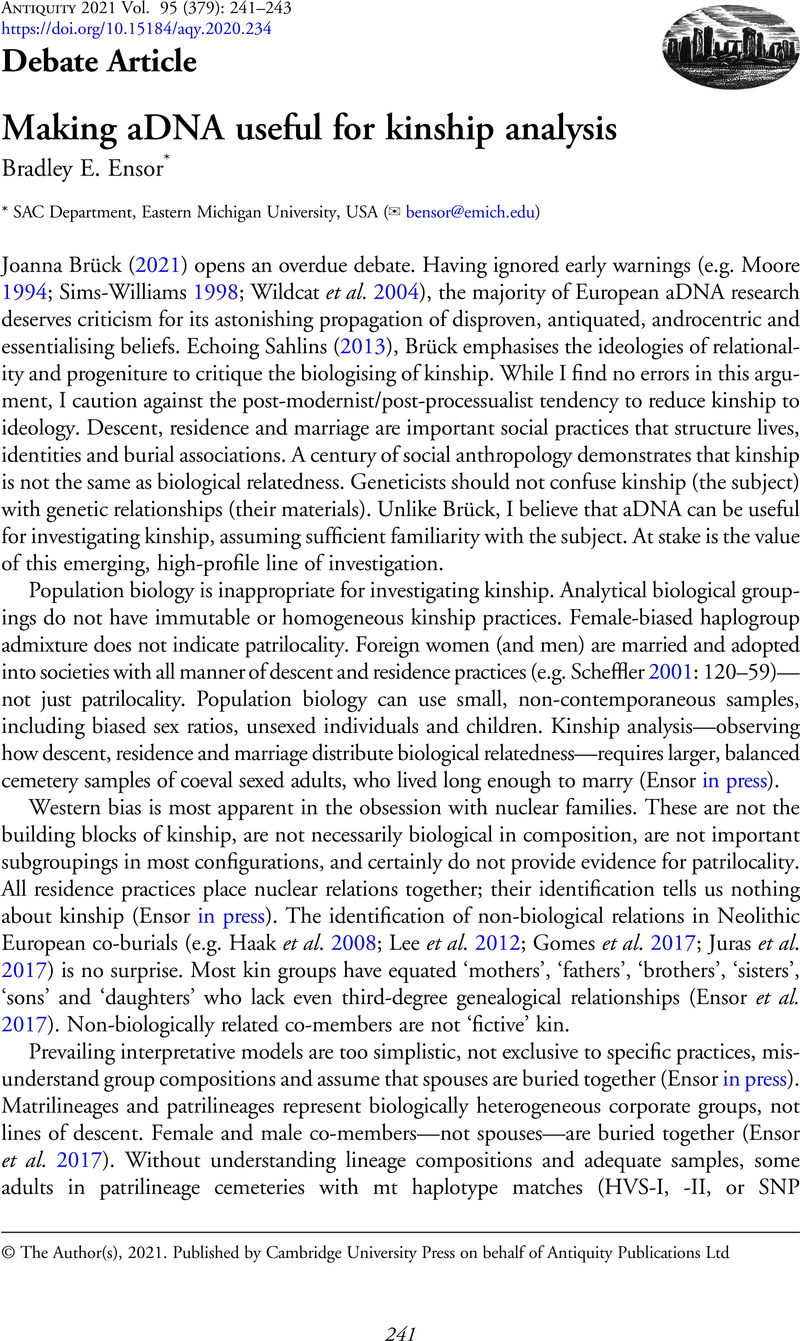Crossref Citations
This article has been cited by the following publications. This list is generated based on data provided by Crossref.
Brück, Joanna
2021.
Kinship: politics and practice.
Antiquity,
Vol. 95,
Issue. 379,
p.
249.
Fowler, Chris
2022.
Social arrangements. Kinship, descent and affinity in the mortuary architecture of Early Neolithic Britain and Ireland.
Archaeological Dialogues,
Vol. 29,
Issue. 1,
p.
67.
Bentley, R. Alexander
2022.
Prehistory of Kinship.
Annual Review of Anthropology,
Vol. 51,
Issue. 1,
p.
137.
Cintas-Peña, Marta
Garrido Pena, Rafael
Herrero-Corral, Ana M.
Flores Fernández, Raúl
Waterman, Anna J.
Díaz-Zorita Bonilla, Marta
Díaz-del-Río, Pedro
and
Peate, David W.
2024.
Isotopic Evidence for Mobility in the Copper and Bronze Age Cemetery of Humanejos (Parla, Madrid): a Diachronic Approach Using Biological and Archaeological Variables.
Journal of Archaeological Method and Theory,
Vol. 31,
Issue. 3,
p.
1152.
Frieman, Catherine J.
and
McNeil, Emma
2024.
The International Encyclopedia of Anthropology.
p.
1.
Rebay-Salisbury, Katharina
2024.
Gender Trouble and Current Archaeological Debates.
p.
19.
B. Foody, M. George
Dulias, Katharina
Justeau, Pierre
Ditchfield, Peter W.
Ladle, Lilian
Gretzinger, Joscha
Schiffels, Stephan
Reich, David
Kenyon, Robert
Sayer, Duncan
Richards, Martin B.
Pala, Maria
and
Edwards, Ceiridwen J.
2025.
Ancient genomes reveal cosmopolitan ancestry and maternal kinship patterns at post-Roman Worth Matravers, Dorset.
Antiquity,
Vol. 99,
Issue. 407,
p.
1356.
Figueiro, Gonzalo
2025.
Simulating the effects of kinship and postmarital residence patterns on mitochondrial DNA diversity in mortuary contexts.
American Journal of Biological Anthropology,
Vol. 186,
Issue. 1,
Guyon, Léa
Heyer, Evelyne
and
Chaix, Raphaëlle
2025.
Was descent in Neolithic and Bronze Age Europe patrilineal or bilateral?.
Proceedings of the Royal Society B: Biological Sciences,
Vol. 292,
Issue. 2057,
Morell-Rovira, Berta
Bickle, Penny
Hamilton, Derek
Díaz-Zorita Bonilla, Marta
Francken, Michael
and
Masclans, Alba
2025.
New temporal dimensions of the Linearbandkeramik cemetery horizon in Schwetzingen (Germany).
Antiquity,
Vol. 99,
Issue. 407,
p.
1212.


